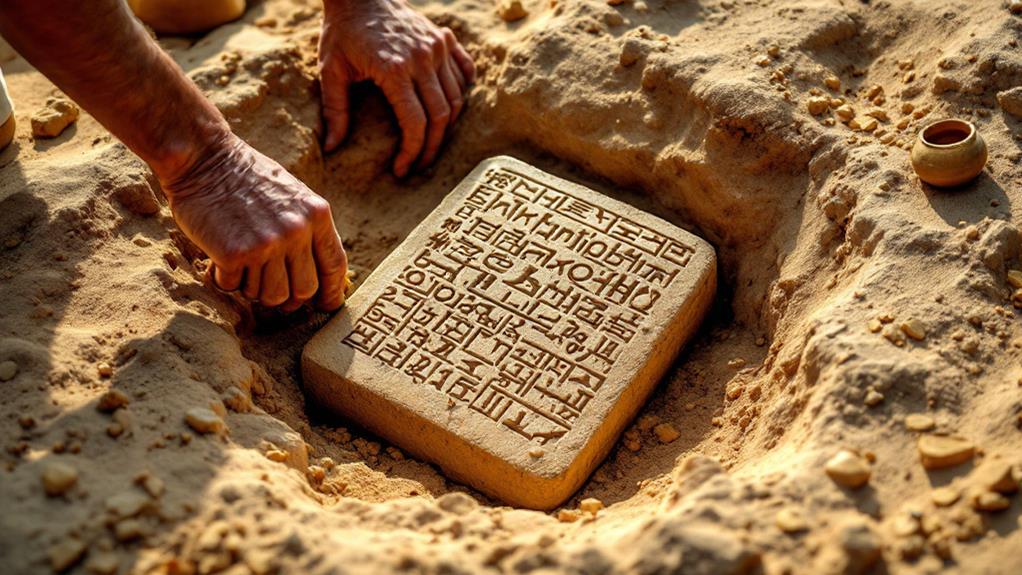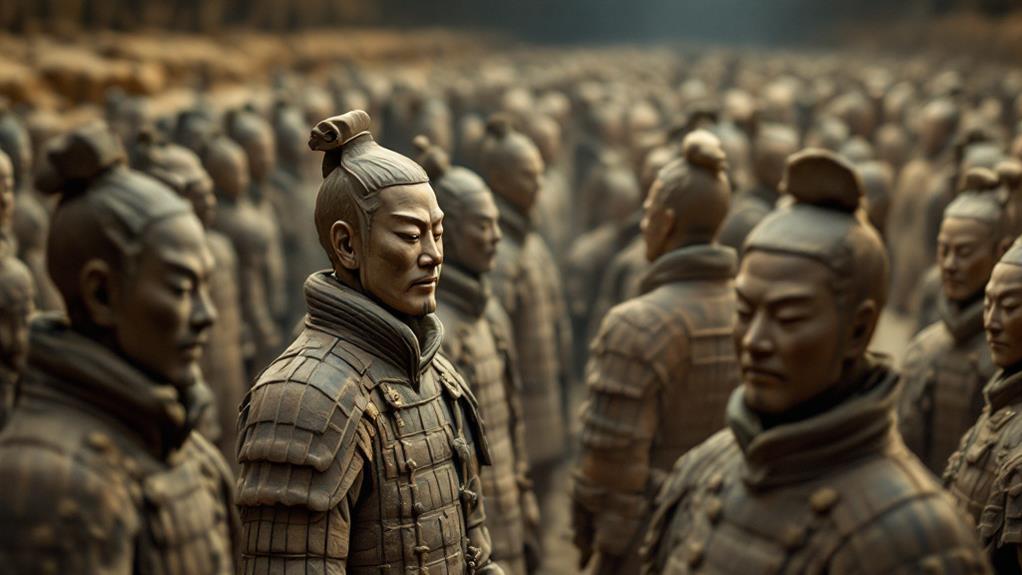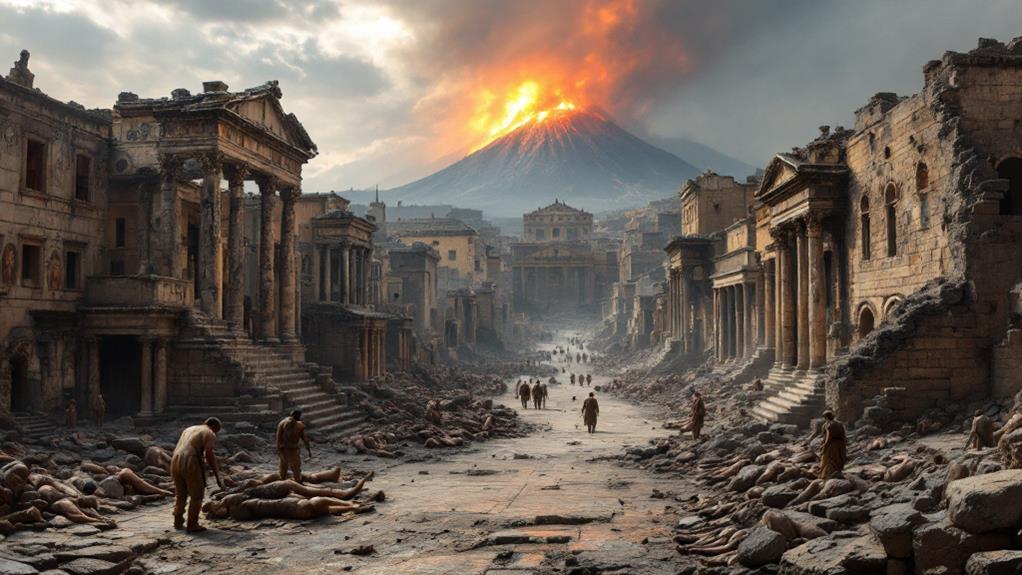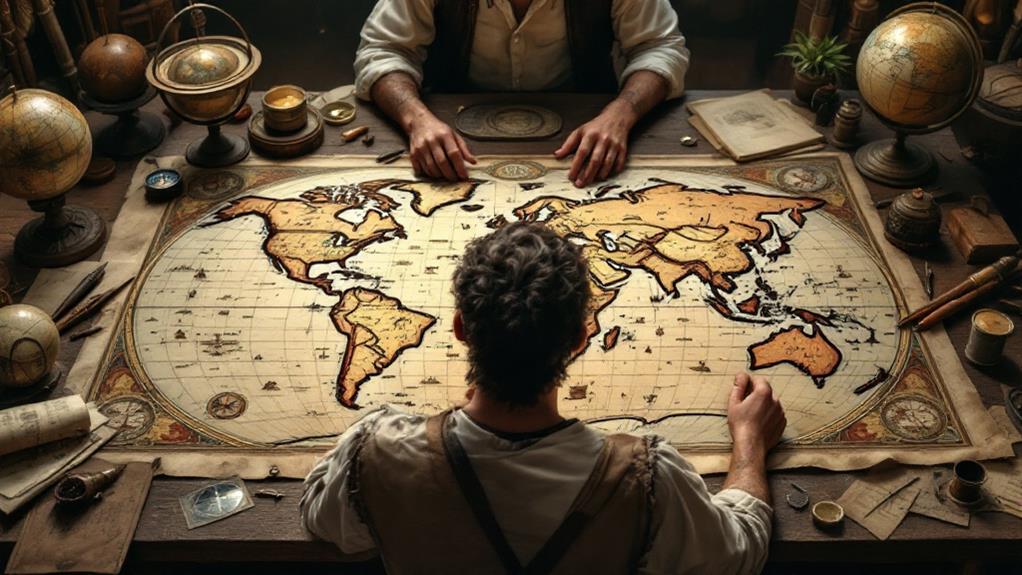Amazing Archaeological Finds: Discoveries That Changed History

You'll be astonished by these pioneering archaeological discoveries that have reshaped our understanding of history. The Rosetta Stone unlocked the secrets of ancient Egyptian hieroglyphs, while Tutankhamun's tomb revealed the opulence of pharaonic burials. China's Terracotta Army showcased the grandeur of Emperor Qin Shi Huang's reign. The Dead Sea Scrolls provided indispensable insights into early Judaism and Christianity. Pompeii's ruins offer a frozen snapshot of Roman life, and Machu Picchu stands as a lasting tribute to Incan engineering prowess. These finds have revolutionized our knowledge of ancient civilizations, but they're just the tip of the archaeological iceberg.
The Rosetta Stone
The Rosetta Stone turned up in 1799 during Napoleon's campaign in Egypt, setting off a race to decipher ancient Egyptian hieroglyphs. This granodiorite stele, inscribed with three versions of a decree issued by King Ptolemy V, became the key to accessing the secrets of ancient Egyptian writing.
You might wonder why it's so significant. The stone's text is written in three scripts: hieroglyphic, Demotic, and ancient Greek. Since scholars could read ancient Greek, they used it as a starting point to decode the other two scripts. This breakthrough in hieroglyphic interpretation opened up a whole new world of understanding ancient Egyptian culture and history.
The linguistic significance of the Rosetta Stone can't be overstated. It allowed researchers to decipher countless other Egyptian texts, providing invaluable observations into pharaonic civilization. Today, you'll find the stone on display at the British Museum in London, where it continues to captivate visitors with its historical importance.
The Rosetta Stone's discovery and subsequent decipherment revolutionized Egyptology, enabling you to read the voices of ancient Egyptians that had been silent for millennia.
Tutankhamun's Tomb
While the Rosetta Stone opened up ancient Egyptian language, another revelation would expose the splendor of their burial practices. In 1922, Howard Carter uncovered Tutankhamun's tomb, revolutionizing our understanding of ancient Egyptian burial practices and royal funerary customs.
You'd be amazed by the treasure trove found within the boy king's final resting place. The tomb contained over 5,000 artifacts, including the famous golden death mask, chariots, and intricate jewelry. This discovery shed light on the opulence of pharaonic burials and the beliefs surrounding the afterlife.
The excavation of Tutankhamun's tomb revealed three key aspects of ancient Egyptian culture:
- The importance of preserving the body for the afterlife
- The belief in providing the deceased with objects for use in the next world
- The intricate rituals and symbolism involved in royal funerary customs
You can't help but marvel at the craftsmanship and attention to detail in each artifact. From the nested coffins to the miniature boats, every item served a purpose in Tutankhamun's expedition to the afterlife. This exceptional find continues to enthrall audiences worldwide and remains one of archaeology's most significant discoveries.
Terracotta Army

Thousands of life-sized clay warriors stood silently for over 2,000 years, guarding the tomb of China's first emperor, Qin Shi Huang. In 1974, local farmers stumbled upon this incredible find near Xi'an, China. As you investigate the site, you'll be amazed by the sheer scale and detail of the Terracotta Army.
Each warrior is unique, with distinct facial features, hairstyles, and armor. The artisans used advanced pottery techniques to create these intricate figures, including molds and assembly line processes. You'll notice the attention to detail in the weapons, horses, and chariots accompanying the soldiers.
The Terracotta Army provides useful insights into ancient Chinese military strategies. The formations and types of soldiers represented reflect the organization of Qin's actual army. As you examine the site, you'll see archers, infantry, cavalry, and high-ranking officers strategically positioned.
This archaeological marvel continues to yield new insights. Recent excavations have revealed painted warriors, bronze weapons, and even acrobats. The Terracotta Army stands as a demonstration of Emperor Qin's power and his desire for eternal protection in the afterlife.
Dead Sea Scrolls
Hundreds of ancient Jewish manuscripts, known as the Dead Sea Scrolls, were unearthed between 1947 and 1956 in caves near the Dead Sea. These ancient manuscripts, dating back to the 3rd century BCE, contain some of the oldest known biblical texts and have immense religious significance for both Judaism and Christianity.
You'll be fascinated to learn that the Dead Sea Scrolls were accidentally discovered by a Bedouin shepherd boy who stumbled upon clay jars containing the scrolls in the Qumran Caves. The discovery led to an extensive archaeological exploration of the area, resulting in the recovery of thousands of scroll fragments.
The Dead Sea Scrolls have provided valuable observations into ancient Jewish history and religious practices. They've helped scholars:
- Understand the development of biblical texts
- Gain knowledge about Jewish sects during the Second Temple period
- Verify the accuracy of later biblical translations
These ancient manuscripts have revolutionized our understanding of the origins of Judaism and Christianity, shedding light on the religious and cultural milieu of the time. The Dead Sea Scrolls continue to be studied and debated by scholars, offering new viewpoints on ancient religious texts and practices.
Pompeii

Near the Bay of Naples in southern Italy, the ancient Roman city of Pompeii stands as a monument to one of history's most famous archaeological unearthings. In 79 AD, Mount Vesuvius erupted, burying Pompeii under layers of volcanic ash and preserving it for nearly 1,700 years. When excavations began in the 18th century, archaeologists were astounded by the level of preservation.
You'll find an incredibly well-preserved ancient city, frozen in time. The volcanic ash burial created perfect casts of victims, allowing you to see their final moments. As you traverse Pompeii's streets, you'll encounter intact buildings, frescoes, and everyday objects that offer a unique glimpse into Roman life.
The discovery of Pompeii revolutionized our understanding of ancient Roman culture. It's provided invaluable insights into architecture, art, and daily life. You can investigate everything from grand villas to humble shops, bakeries, and even brothels. The site continues to yield new findings, with recent excavations uncovering intact food stores and colorful frescoes. Pompeii remains one of archaeology's most important and captivating sites, drawing millions of visitors each year.
Machu Picchu
High in the Andes Mountains of Peru, Machu Picchu stands as one of the world's most iconic archaeological sites. This ancient Incan city, hidden for centuries, reveals the architectural marvels of a once-thriving civilization. As you explore its ruins, you'll be amazed by the precision of stonework and the ingenuity of Incan engineering.
The mountainous Andes landscape played a pivotal role in Machu Picchu's design and function. You'll notice how the city seamlessly integrates with its surroundings, utilizing natural terraces and water sources. The site's remote location contributed to its preservation, allowing modern archaeologists to uncover its secrets.
When visiting Machu Picchu, you'll encounter:
- The Sun Temple, featuring intricate stonework aligned with celestial events
- Agricultural terraces that showcase advanced farming techniques
- The Intihuatana stone, believed to be a celestial clock
You'll be struck by the Incan civilization's ability to construct such an impressive city without the use of mortar or iron tools. As you wander through the ruins, you'll gain a deeper appreciation for the ingenuity and skill of these ancient builders, whose legacy continues to inspire and amaze visitors from around the world.



